
Month: March 2022

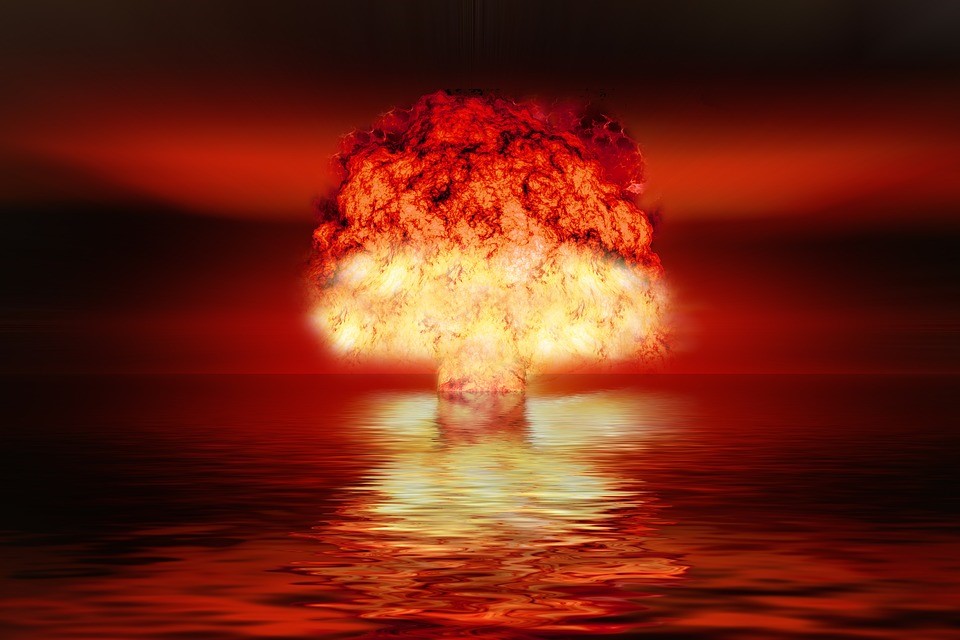
It is time that the Democratic Party leadership, particularly Barrack Obama and Joe Biden, explain their foreign policy goals and methods.
In April 2014, the military newspaper Stars and Stripes reported a story almost totally ignored by the media: all American tanks had been withdrawn from Europe under orders from President Obama.
According to the Department of Defense, at its peak, Germany, the main center of NATO activity during the first Cold War, was home to 20 U.S. armored divisions, with about 6,000 tanks. Despite the glaring revival of threats from Moscow, the United States no longer had any tanks, the pivotal weapon in land combat, stationed on the entire continent.
Mr. Obama’s extreme views on the lack of need for tanks became an issue in the 2012 campaign, when vice presidential candidate Paul Ryan criticized the President’s attempt to shut down the only American plant that produces them.
Russia had invaded and annexed Crimea in March 2014.
As the Obama Administration concluded its tenure, major reversals by the succeeding Administration were required to undo the extraordinary foreign and defense policy errors that were committed during Barack’s tenure in Europe, the Middle East, the Pacific and within the Western hemisphere including its precipitous withdrawal from Iraq, leaving no residual force behind, which gave rise to the ISIS Caliphate, a move duplicated when Biden withdrew from Afghanistan leaving vast amounts of military equipment behind in the hands of the Taliban.
Since the inauguration of Joe Biden and the takeover of Congress by Democrats, America has projected weakness at home and abroad.
The Biden Administration intentionally destroyed American energy independence, thereby enriching Russia. It surrendered Afghanistan to the Taliban. It weakened the U.S. military. It has made it easier for China’s spies to steal from the U.S.
In response to the assault on Ukraine, the sanction that would most immediately and effectively impact Putin would be one placed on Russia’s energy sector. Biden has resisted doing this. Indeed, his Administration has noticeably taken a back seat to Europe in opposing Moscow’s aggression.
It’s more than just questions of events occurring abroad. Recently, the Biden Justice Department has ended the “China Initiative,” a program aimed at reducing the impact of Beijing’s massive espionage efforts in the United States.
As threats from China and Russia have grown more intense, the Biden Administration’s response was to cut the Pentagon’s spending power. Indeed, its initial Defense request to Congress would have sliced 3% of the military’s purchasing power. Congress had to restore some of that in a common-sense move.
Vladimir Putin has the world’s largest nuclear arsenal, thanks to a deal Obama made with him in the early days of his presidency. China has been dramatically increasing its nuclear forces. It has also ordered the building of multiple launch sites. One military analyst in Washington suggested that the density of each silo field indicates that these are intended to be used for a first strike.
RealClearDefense reports that “On August 12, 2021, the Commander of U.S. Strategic Command Admiral Charles Richard stated, ‘We are witnessing a strategic breakout by China….The explosive growth in their nuclear and conventional forces can only be what I described as breathtaking.’He added that ‘…frankly, that word ‘breathtaking’ may not be enough.’ Admiral Richard characterized China as a ‘peer’ nuclear competitor and noted that we now face two nuclear ‘peer’ competitors, Russia and China, compared to one during the Cold War.”
For the first time, America faces not one but two nuclear adversaries, one, Russia, with a larger arsenal and the other, China, that will soon equal or exceed U.S. atomic capabilities. Putin has openly stated that he would have no reservations about using nukes both on the battlefield and across the globe. China continues to develop first-strike capabilities.
In response to these clear and unequivocal threats, Democrats continue to underfund America’s defense.
illustration: Pixabay
Foreign Policy Update
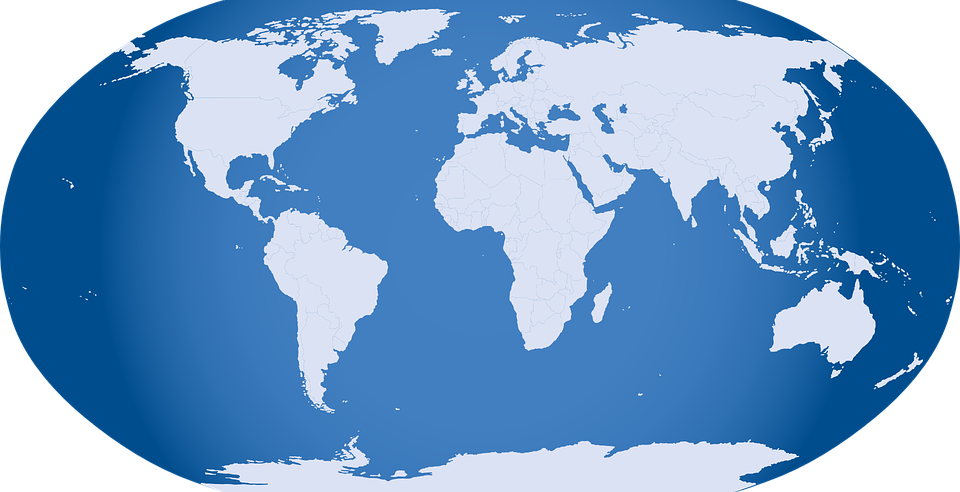
INDIA
Multiparty elections are moving into their final week in five Indian states containing over 180 million people or about 13% of the country’s population. On March 10 the Bharatiya Janata Party (BJP) hopes it will add to its previous four wins by taking the fifth state during this election cycle. Uttar Pradesh is the state most political analysts are watching carefully to see if Chief Minister Yogi Adityanath wins. If he does, he may become the successor to Prime Minister Narendra Modi. To convince the BJP he deserves the position he must achieve a decisive win. In 2017 his election was less contentious than in this cycle.
Four years ago, the BJP picked up 312 of the 403 state seats. Rising unemployment in Uttar Pradesh in recent months, however, has made it a more difficult challenge this year as many have joined violent protests against the state, which suffered more than most of India from the Covid pandemic. Hundreds of thousands died when the Indian health care system collapsed, and two devastating lockdowns resulted in millions losing their jobs. According to Michael Kugelman, writing in Foreign Policy: “The Uttar Pradesh election is in many ways a referendum on BJP rule: its handling of the economy and the pandemic, its use of divisive rhetoric, and its political future. And when it comes to Indian politics, what happens in Uttar Pradesh doesn’t stay there.”
The elections this week, according to some analysts following the elections, are so important that they may determine the future of democracy in India.
UNITED NATIONS
Earlier this week nine US senators called for the removal of Russia from its seat on the United Nations’ Security Council. The cries have grown stronger in recent days as Putin continues to move his invading forces further into Ukrainian territory. “The UN is a political body. It is not a church. Ultimately, the UN is there as a place where states…can talk to each other in the last resort,” said Richard Gowan, UN director at the International Crisis Group. Senator Joni Earnest (Iowa-R), added that “Putin has demonstrated in plain view his ruthlessness and complete disregard for humanity and our international norms, and the idea that he and his cronies should have a vote on the U.N.’s Security Council is an absolute disgrace.”
The Congressional Resolution, even if it passes, holds no weight on the UN’s membership. No country has been expelled from the UN since its inception. Another message could come from the General Assembly (GA) if it suspends Russian officials from the GA. The publication Defense One quotes Daniel Baer, acting director of the Europe Program at the Carnegie Endowment for International Peace, as arguing that highlighting Russia’s bad behavior is worth it, even if it doesn’t end with Moscow being expelled. He added: “It’s a way of making a statement about their current behavior being completely unbecoming a member of the security council… We should find every opportunity to shine a spotlight on the fact they are acting in a way that’s completely inconsistent with their obligation as a great power and against the UN charter.”Ukraine has reraised the issue of how Russia first obtained its seat after the fall of the Soviet Union. According to the UN Charter, the USSR and not Russia has a right to a seat on the Security Council. It is highly unlikely that China would dare to raise the issue given that it took the Republic of Taiwan’s seat. The answer rests on whether Russia was the “Successor State” or a “Continuing State” under international law. A successor state is when a sovereign state takes over a territory and populace that was previously under the sovereignty of another state. Unlike a continuing state, a successor is viewed legally as having a new personality. Russia, Ukraine, and George are generally considered successor states of the Soviet Union.
Daria Novak previously served in the U.S. State Department.
China’s Economic Aggression
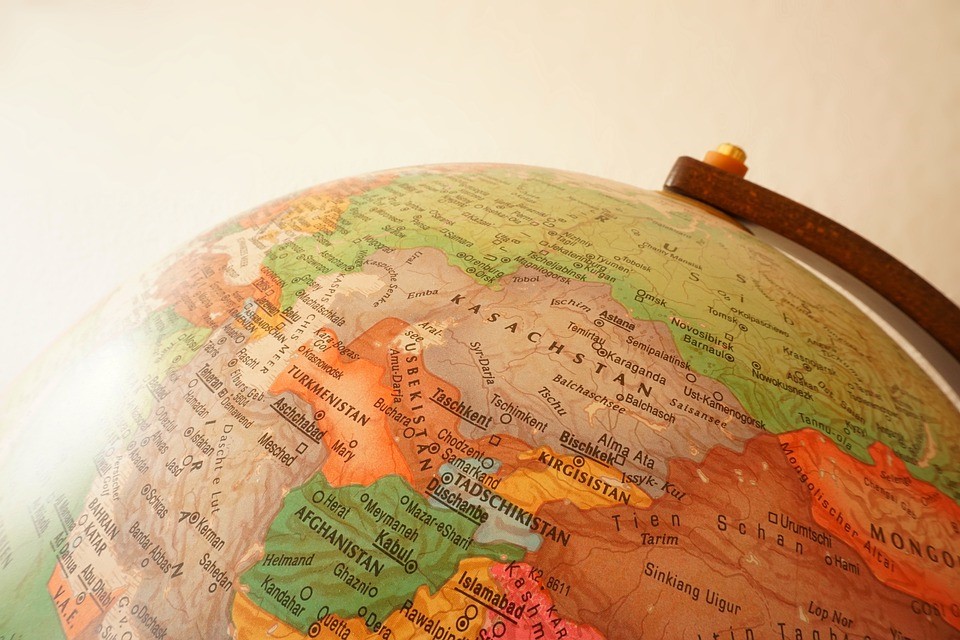
While television screens across the world are filled with dramatic images of kinetic warfare ongoing in Ukraine this week, there is a significant but overlooked economic battle being waged in the Central Asian states. It is receiving little media attention despite its potential to destabilize the entire region. China’s BRI debt trap has ensnared several of the central Asian nations, including Kyrgyzstan and Tajikistan. What started in Kyrgyzstan in 2008 as a $10 million bill owed to China, now tops $4 billion and is growing beyond the country’s ability to pay. It dwarfs the economy and now accounts for 45% of the nation’s sovereign debt, which totals 30% of its annual GDP. Tajikistan is in a similar bind as almost half of its sovereign debt, making up more than 27% of its GDP, is owed to China. According to Sergei Gretsky, of the Jamestown Foundation, “Unlike Kazakhstan, Turkmenistan, and Uzbekistan, Kyrgyzstan and Tajikistan have less diversified and resource-rich economies and, thus, lack collateralizable assets to secure loans… most of the loans China has extended them are sovereign loans—i.e., direct loans to the government, whose repayment the latter guaranties regardless of the project’s profitability.”
Tajikistan and Kyrgyzstan’s repayment terms are not directly tied to the profitability of the respective projects. The terms of these loans explicitly hide transparency and in some cases the very existence of the loan itself. Gretsky points out that Bishkek and Dushanbe are in “no position to protest,” unlike Kazakhstan, where President Kassym-Jomart Tokayev suspended the Astana Light Rail Project in 2019 due to charges of rampant corruption. That loan was funded by a $1.5 billion loan from the China Development Bank and backed by a sovereign guarantee.
Last year a study by the Center for Global Development in Washington unveiled Chinese credit practices by offering a first-of-its-kind analysis of 100 contracts awarded to 24 developing countries in Africa and Asia, Europe and Latin America, including Montenegro, Kyrgyzstan and Serbia, according to Reed Standish, writing for the www.azattyq.org news website in Kazakhstan. How China protects its financial interests has come under scrutiny as some provisions allow Chinese companies to confiscate property or assets in the event of non-compliance with payment obligations, raising concerns about the seizure of land or other assets and the huge debts that leave the government in debt to Beijing, notes Standish.
When Beijing offers grants, instead of predatory loans, they usually are earmarked for projects that project China in a good image or are symbolic. Rather than revenue-generating projects China ensures that these grants cement political alliances and the diplomatic ties it needs to push forward its BRI Initiative. Kyrgyzstan and Tajikistan are in “no position to confront China, reject non-viable projects, or prevent the further slide into a debt trap,” according to Gretsky, as both have only two options when it comes to repayment. They can restructure and reschedule the debt to obtain short-term relief at a great increase in overall cost or default, as occurred with Sri Lanka’s Columbo port project. The port is now under Chinese control.
Kyrgyzstan and Tajikistan’s main asset that has possible value for Beijing is the energy from water resources and hydropower. Kazakhstan, Turkmenistan, and Uzbekistan are downstream. China could require the transfer of these water resources and hydropower stations from the upper reaches. China has only one glass of clean drinking water for every four available in the United States. Its demand is growing along with the Xinjiang economy in China’s western regions. Beijing has a long-standing water dispute with Kazakhstan that goes back to the 1990’s, when China started extracting additional water from 20 transboundary rivers to supply its needs. The ongoing dispute could entangle several of the Central Asian states and China and expand into an armed conflict over the critical resource. Once China controls all the upper reaches it will have additional influence over those states downstream. That will allow Beijing to force them into its geopolitical order. China already diverts over a billion cubic meters of water annually from several of these rivers. Gretsky suggests that the “BRI initiative looks increasingly less a win-win proposition and more like a threat to the sovereignty and economic prosperity of the Central Asian states.” The renowned historian Michael Howard, writing in 2009, pointed out that war is as much about economics today as it is about a country’s military expertise. Predatory loans and water rights in Central Asia could ignite a new kinetic conflict in the region or at a minimum, the emergence of strong Sinophobic currents in Kazakh society if no compromise is found.
Daria Novak served in the U.S. State Department.
Putin’s Weakness
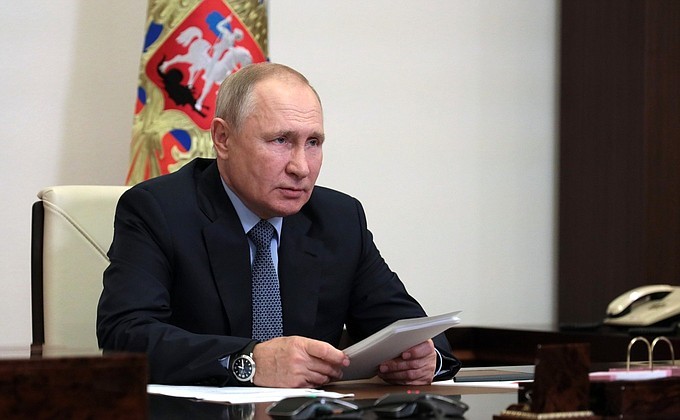
“Putin, you just made a big mistake” is the chant resounding around the world today, even inside Germany where tens of thousands demonstrated near the Brandenburg Gate in support of the Ukrainian people. Putin put his nuclear deterrent forces on high alert this week although he knows the West has sworn never to use nuclear weapons first. If the Russian leader believes he needs a “deterrent,” if can only be because of his willingness to move away from a “no first use” of a nuclear weapon policy. This demarcates a critical escalation of the war in Ukraine and pointing towards irrationality by the leading player. The Russian leader’s miscalculations surrounding his Ukraine operation will be more lasting than simple brinksmanship gone awry.
Putin is weakening and, perhaps, dethroning autocratic leaders everywhere as the Ukrainian people inspire others who are not free to rebel. Modern warfare is conducted and broadcast simultaneously today. Analyses of conflicts, for better or worse, are transmitted around the world across the Internet. Often, they are wrong; but sometimes they are right. Putin falsely counted on heavy-handed World War II tactics and kinetic warfare to walk over Ukraine without much resistance. Whether or not he occupies Ukrainian territory successfully in the future, he lost his war. The world better hope he has not also lost his mind.
The Ukrainian people have shown the world they are willing to die bravely in the face of advanced weaponry rather than become servants under an autocratic-run state with a demonic leader. China is distancing itself from Russia, too. There are indications of a deepening fissure in a relationship that never was a true alliance to start, but only one of convenience. The West underestimated the depth of the earlier Sino-Soviet split and has yet to fully recognize the seriousness of their current chasm. Putin needs cash to support his over the border aggression. To retain Russia’s energy income, he moved his country’s gas and oil contracts away from Europe to China this month in anticipation of new Western economic sanctions. Xi readily inked the deal with Putin to buy the critical energy China needs to continue its economic ascent. Here, once again, Putin made a grave miscalculation.
Xi already built two pipelines from eastern Siberia down to China’s heavily populated and industrial eastern coastal area. Now Beijing temporarily has what it needs in abundance – close and relatively cheap energy – to support its maturing economy. Putin simply provided Xi a little more latitude before the Chinese leader and the CCP have to decide how they confront Moscow over the 1 million square miles of energy-rich territory Russia seized at the end of WWII. Paper treaties in the communist world equate to little more than using a sheet of newspaper as kindling to start a fire. Xi, like Putin, announced his plans to reassert China’s rightful place of leadership in the world (from a communist perspective). Unlike Putin, Xi is sharper, more cunning, and better at calculating his opponent’s response while operating under an almost impenetrable veil of secrecy. Putin himself confirmed by his actions he is a paper tiger in China’s eyes now.
At seventy years of age this may be Putin’s last hurrah; although cornered like a skunk he may become more dangerous in the short run for the West. The former Soviet spy, now Russia’s leader, is living in a new world that he still sees through eyes of an old, paranoid, KGB-trained operative. Putin is unable to change his stripes. It is clear there will be no resurgence of a Russian empire without Putin first confronting virtually every Western democracy and doing it without the strong support of China. The Russian oligarchy must be getting edgy at home, too, as Russia is emerging as a pariah state with new economic sanctions looming over their financial empires. How long will the Russian army be willing to continue killing Ukrainians who Putin calls their “fellow countrymen?” Already there are signs the military is unhappy with Putin’s venture. Putin faces many more challenges than just the Ukrainian resistance.
Xi can wait out the time until a post-Putin era emerges in Russia, as it once waited out the post-Unequal Treaties period. The Chinese state today is strong and aggressive. It is beginning to take back what it perceives are its rightful lands. Xi Jinping is watching events in Europe closely while overnight Putin turns into heavier baggage for the CCP. If the West plays its cards well, this could mark a historical point of reignition for a Democratic resurgence around the world. The US most likely will have a new president in the Oval in two years. If he is one who knows how to play the global chess game, Putin’s ill-advised venture could serve as the opening move that initiates a desire for a new democratic golden era of peace and prosperity.
Daria Novak previously served in the U.S. State Department
Ignoring Russia’s Massive Military
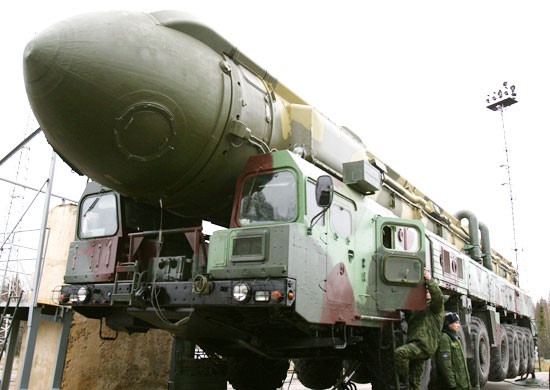
As tensions with Russia continue to escalate, recognizing the dramatic increase in its’ military strength becomes vitally important.
The Stockholm International Peace Research Institute (SIPRI) notes that “Russia has embarked on a military modernization program funded by rapidly increasing military spending and has pursued a more assertive foreign policy…Russian military expenditure has grown significantly over the past two decades. It increased by 30 per cent in real terms between 2010 and 2019 and by 175 per cent between 2000 and 2019.”
The actual impact of Moscow’s military spending must be seen in light of a key reality, SIPRI emphasizes: “Military goods and services cost less in Russia than in the USA or most of Europe and, therefore, that Russian military spending has a higher purchasing power. For example, unlike the USA and other large European states, Russia still relies on conscription. In addition, Russian career soldiers have lower salaries: for example, in 2019 a Russian lieutenant colonel received approximately $1330 per month, whereas a (lower-ranked) captain in the British Army received more than $4000 monthly… Over the decade 2010–19 Russia spent nearly 40 per cent of its total military expenditure on arms procurement. This is a much larger share than most other states, including all members of the North Atlantic Treaty Organization (NATO). This means that, in absolute terms, Russia’s spending on procurement was more than twice that of France, Germany and the UK, although its total military spending was just 30–34 per cent higher in 2019.”
While significant attention has been paid, particularly in light of the Ukraine crisis, to the Kremlin’s land forces, the cold war-like emphasis on nuclear weaponry must be carefully noted.
The Heritage Institute reports that “Russia is clearly seeking to gain a competitive nuclear advantage over the U.S.” Not only is Putin seeking to gain a global nuclear dominance, he is using atomic weapons as an economical means to win land battles. “Russia has a stockpile of at least 2,000 non-strategic (low-yield) nuclear weapons (NSWs) that are unconstrained by any treaty, outnumbering U.S. NSWs by at least 10 to one. In 2019, the Director of the Defense Intelligence Agency (DIA) reported that Russia’s stockpile is anticipated to grow even more. Russia operates dozens of dual-capable delivery systems, including short-range ballistic missiles, depth charges, torpedoes, land mines, artillery, and mortars. This disparity is particularly concerning because Russia’s recent nuclear doctrine indicates a lower threshold for use of nuclear weapons. According to the United States’ 2018 Nuclear Posture Review, Russia “mistakenly assesses that the threat of nuclear escalation or actual first use of nuclear weapons would serve to ‘de-escalate’ a conflict on terms favorable to Russia.”
Some in Congress, including Republican Mike Rogers (R-AL), House Foreign Affairs Committee Lead Republican Michael McCaul (R-TX), and House Permanent Select Committee on Intelligence Lead Republican Mike Turner (R-OH) are issuing heated warnings.
“As Russia assembles forces for what would be the largest land war in Europe since WWII, Vladimir Putin is overseeing a massive strategic exercise to demonstrate the Russian Federation’s willingness to fight and win a nuclear exchange with the West. Reportedly, this exercise is using the full range of Russian strategic, tactical, and advanced hypersonic delivery systems to carry out nuclear strikes – many of which would only be useful against Western Europe or the United States. The message is clear: Russia will use its modernized and capable nuclear arsenal to shape NATO responses and, if necessary, compel a favorable outcome in a conflict. President Biden, on the other hand, is conducting a review of the United States’ own nuclear posture and considering shedding vital nuclear capabilities and moving away from the nuclear declaratory policy that has deterred the wartime use of nuclear weapons globally for over 70 years. Our NATO allies understand how damaging these moves can be to global stability, and they have been united in opposing such moves. It’s clear that the Biden Administration’s approach is completely out of touch with the dangerous reality facing the U.S., NATO, and our allies around the world.”
Illustration: The road-mobile missile system Topol’ with missile RT-2PM, unparalleled in the world rocket and missile engineering, is designed to destruct all the types of strategic objectives in any situation of combat employment. RT-2PM is the fourth generation’s strategic missile. (Russian Defence Ministry)
The Real State of the Union

President Biden will deliver his State of the Union address today, far later than prior dates. As every president does, he will attempt to provide a rosy picture of his young Administrations’ accomplishments in dealing with challenges.
Far more than any of his predecessors since the end of the Second World War, however, his record in both foreign and domestic affairs is bleak, even disastrous. He tacitly acknowledged this when he pled with the media to give him even more favorable coverage. It is also evident in his personal reluctance to respond to press inquiries, and press secretary Jen Psaki’s minimal responses to questions she finds uncomfortable.
A thoroughly transparent and accurate recitation of the true State of the Union would not be pleasant.
Russia has invaded Ukraine. China is threatening Taiwan. Iran is developing nuclear weapons to destroy Israel. The Taliban is parading around Afghanistan in captured American weapons.
Moscow now has a larger nuclear arsenal, thanks to an agreement penned during the Obama-Biden Administration. Beijing has a larger Navy, due to the refusal of the President’s party to agree to adequate military funding. Both have the proven capability to destroy American satellites, potentially leaving the Pentagon deaf, dumb and blind. Both have hypersonic missile capabilities Washington lacks.
The nation’s reputation endured a massive black eye from the botched withdrawal from Afghanistan.
In response to all this, Biden originally presented a defense budget that cut the military’s purchasing power by 3%.
The southern border is open, and hundreds of thousands of illegals, including COVID-positive individuals, members of criminal cartels, human traffickers, and terrorists are among the many others storming into the nation.
At home, criminals are running amok, devastating American cities. Much of this is due to unrealistic and radical policies regarding bail and incarceration that Mr. Biden tactily agrees with. Excessively lenient policies have reversed the hard work and solid achievements that took decades to attain.
The U.S. budget is, if it were a private organization, bankrupt. Not only has that deeply troubling fact been ignored by the current White House, but a vast amount of additional debt has been piled on top of it.
Inflation is devastating the lives of the American people, a direct result of the current White House’s policies.
The educational system, despite ever increasing funding, produces poor results, with student competency rates in key areas declining. Instead of concentrating on fundamentals, schools push sexual, cultural and political propaganda. When parents complain, they are labelled terrorists by the Biden Justice Department.
That same Department of Justice continues to turn a blind eye towards the blatant violations of the law by Hillary Clinton and the Biden family. It ignores the wrongdoing of Adam Schiff when he assured Americans that he had evidence that Trump colluded with Russia, which it has now been conclusively proven that nothing of the sort occurred and no such evidence ever existed.
Race relations continue to be tense. Much of that is due to the eagerness of the President and his party to encourage hostility as a way to gin up their base, and to push a narrative of “systemic racism” even when there is not a single law or regulation that permits racism.
Mr. Biden’s signature issue is his stated determination to fight COVID. He and his party conveniently forget that, when the Trump Administration banned travel from China when the Pandemic began, they called him “xenophobic.” When the Trump White House developed a vaccine in record time, many in the President’s party claimed that it was unsafe or ineffective and discouraged its use.
Mr. Biden promised to defeat COVID. There have been more COVID deaths during the first year of his Administration than in 2020.
A State of the Union admission of these issues, and a promise to change course, would go a long way in restoring Americans faith in their government.
Illustration: Historic view of House Chamber (U.S. House of Representatives)